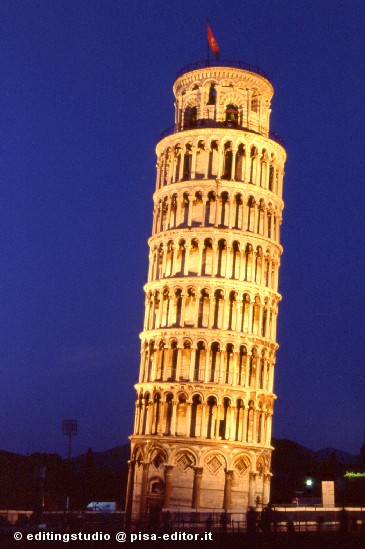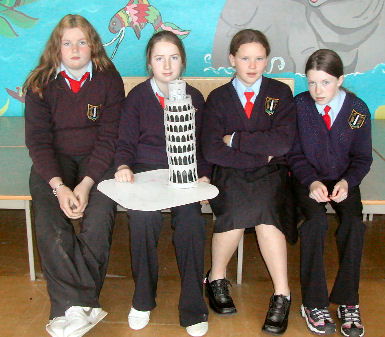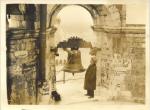
As you read through it I hope you will learn some interesting facts about this unusual tower and also some information about its history.
Anyway, I hope you enjoy it.
Leaning Tower of Pisa |
|
|
First I got a long tube and I a couple of layers of paper mache on it. Then I rolled up eight sheets of newspaper and glued them on to make eight storeys and I painted it black. Then I cut out the shape of the columns for each storey from some grey rubber type material and I glued on matches to make the columns. I used a small carton to make the belfry and I drew the windows and seven bells on it. I used a match and some red material to make the flag. I drew a map of Italy on a piece of stiff card for the base, and I put the tower on it. I propped the tower on one side to make it lean. |
|
 |
Some Facts About the Tower1. Official Name: Torre Pendente di Pisa 2. Function: Bell Tower (Campanile)3. Years Built: 1173 - 1350 4. Original Architect: Bonanno Pisano 6. Weight: 14,700 metric tons 7. Thickness of walls at the base: 8 feet 8. Direction of lean: 1173 - 1250 North,
|
HISTORY OF THE TOWERThe Leaning Tower of Pisa is built in the town of Pisa in Italy.It is a bell tower seven stories high with a belfry on top. The architect of the tower was Bonanno Pisano, a well known resident of Pisa. The building was started on 9th August, 1173 and was finished around 1350. When the construction reached about one and a half meters up on the third floor, because of marshy and unstable soil, the tower was found to be leaning so the work was stopped. The restarting of the work took place in two phases, during which
they tried to reduce the slope. |
|
THE BELFRYThe completed belfry replaced the temporary one on the seventh
level, where places for the bells are still evident. There are seven
bells. The biggest one is made out of gold and is called dell’Assunzione
or l’Assunta (Our Lady of the Assumption) |
|
THE STAIRSThe stairs of the tower are made of marble, as are the walls and the 200 columns of the tower. There are 293 steps which start on the ground floor and reach to the seventh balcony. The large square where the bell tower stands was used once a year to host a Mediterranean exhibition fair where merchants from all regions showed their goods. The bell tower was an ideal place from which the fair could be seen, and as there were some very important guests, the stairs reaching the tower had to be well built. |
|
|
PISA
|
|

 HOW
I MADE MY MODEL
HOW
I MADE MY MODEL 

 Pisa
is the capital city of Pisa Provence in the Tuscany region of Italy.
It is situated on the river Arno near the Ligurian sea.
Pisa
is the capital city of Pisa Provence in the Tuscany region of Italy.
It is situated on the river Arno near the Ligurian sea.